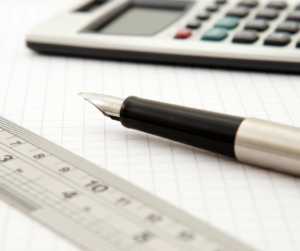
Whether you’re looking for faster processing time or something more environmentally friendly, e-beam can be a great choice for terminal sterilization. However, the thought of going through the conversion process from an existing sterilization method can have those of you in quality hiding under your desks.
The bad news? Yeah. Not gonna lie. It’s a daunting task.
The good news? We’re here to walk you through it!
If you’re interested in converting and want to know more about how we can help you specifically, email us at ebeam@ebeamservices.com to set up a free consultation call.
In the meantime, here is a quick rundown of the steps needed to convert from ETO or Gamma.
ETO or Gamma to E-beam Conversion Process
Step 1: The Material Test
During a material test, you will send us several samples of your product and we will expose them to two or three different dose levels. We will then send the samples back to you for you to test for efficacy. This is used to determine compatibility with e-beam and establish the maximum dose your product can see.
Some frequently asked questions about the material test are 1) how many samples do I need to send? and 2) How do you determine what doses to test?
The quantity of samples is completely up to you – whatever number you need for your testing purposes after processing. And several factors are used to determine what doses to test, including your existing minimum dose needed to achieve sterility, the materials used in the products, and the overall packaging configuration.
Gamma note: E-beam and gamma are both radiation sterilization methods, and are governed by the same standards. Because of this, your maximum dose from gamma will transfer to e-beam, without having to re-do this test! But, e-beam has a faster dose rate than gamma and generally causes less degradation, so there are some cases where it might be beneficial for you to perform another material test to qualify a higher maximum dose with e-beam.
Step 2: The Dose Map
One we know the maximum dose, we then perform a dose map and three dose map validations.
During this process, we take dosimeters and place them throughout a case of product where we would expect to find the minimum and maximum dose. How do we know where to place the dosimeters? Physics, and a lot of experience!
We then use the ratios of the applied surface dose to these min and max readings to help us determine the processing parameters we would need to use each and every time we see your product to make sure that everything inside the case receives a dose that’s above the minimum needed to achieve sterility, and below the maximum established in Step 1.
And then we do this three more times, to make sure we have the most accurate results possible.
Step 3: The Dose Verification/Dose Audit
The dose audit helps audit the minimum dose needed to achieve sterility and is generally performed on a quarterly basis.
There are a couple of ways of going about a dose verification, but generally, your micro lab will let us know a sublethal dose needed to be applied to your product. We then process a certain number of samples at this dose and send them back to your lab, where they test for positives.
This process helps make sure the minimum dose hasn’t changed at all, do to any manufacturing or process updates.
—
Once the sterilization validation process is complete, you won’t need to re-do it again, unless there is a change to your product or packaging!
Interested in learning more? Email us at ebeam@ebeamservices.com to schedule a free consultation call to discuss the conversion process for your product.



